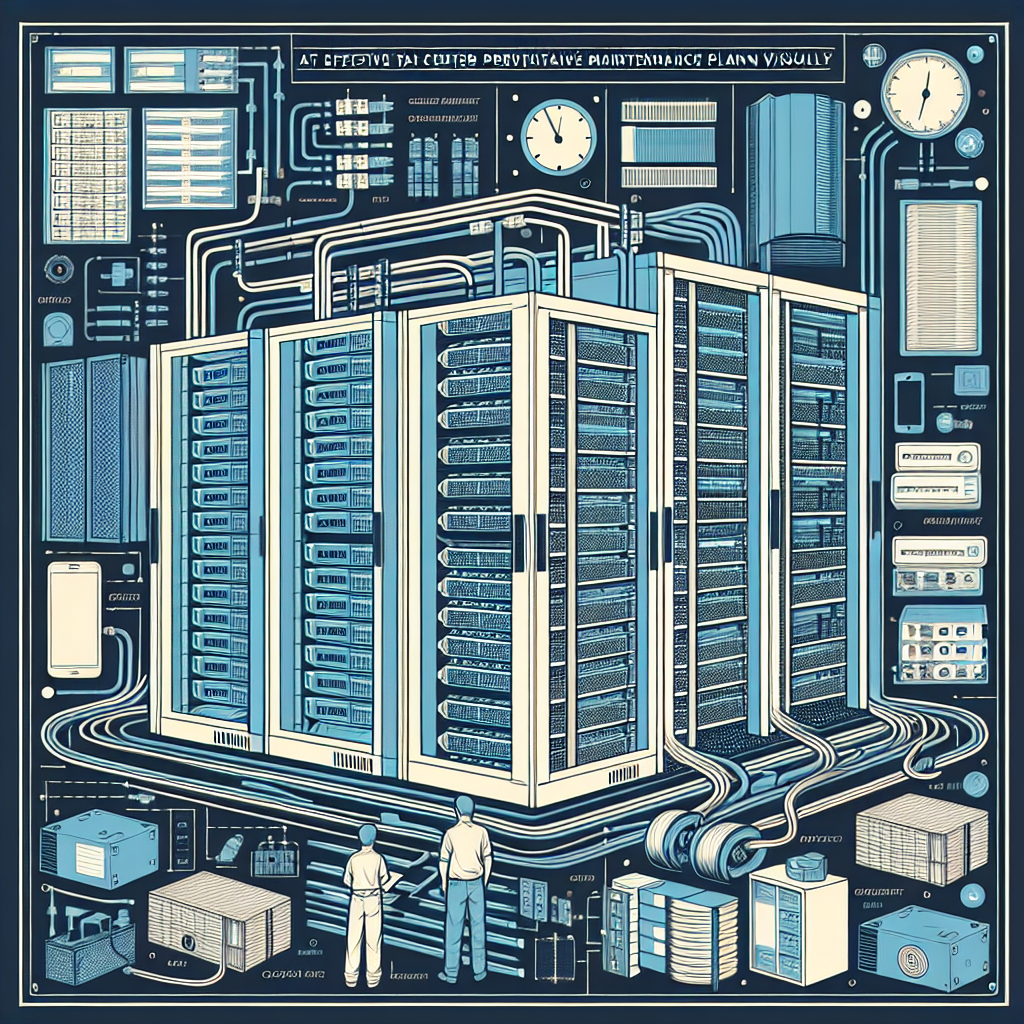Data centers are critical components of modern businesses, housing the servers, storage devices, networking equipment, and other infrastructure that support the organization’s digital operations. To ensure that these facilities continue to operate efficiently and reliably, it is essential to have a comprehensive preventative maintenance plan in place. A well-designed maintenance plan can help prevent costly downtime, extend the lifespan of equipment, and optimize energy efficiency.
Key components of an effective data center preventative maintenance plan include:
1. Regular inspections: Regular inspections of all critical infrastructure components, such as power distribution units, cooling systems, and server racks, are essential to identify potential issues before they escalate into major problems. Inspections should be conducted on a scheduled basis and should include visual checks, temperature readings, and performance testing.
2. Cleaning and dust control: Dust and debris can accumulate inside servers and other equipment, leading to overheating and reduced performance. Regular cleaning of equipment and the data center environment is crucial to prevent these issues. This includes cleaning filters, fans, and vents, as well as keeping the facility free of dust and debris.
3. Testing and monitoring: Regular testing and monitoring of critical systems, such as backup power systems and environmental controls, are essential to ensure that they are functioning correctly. Monitoring tools can provide real-time data on equipment performance, allowing data center operators to identify and address issues before they impact operations.
4. Equipment maintenance: Regular maintenance of servers, storage devices, networking equipment, and other critical infrastructure components is essential to ensure optimal performance and reliability. This includes firmware updates, hardware upgrades, and replacing worn-out components as needed.
5. Documentation and reporting: Keeping detailed records of maintenance activities, inspections, and equipment performance is essential for tracking maintenance tasks, identifying trends, and planning future maintenance activities. Regular reporting on maintenance activities can help data center operators identify areas for improvement and demonstrate compliance with industry regulations.
6. Training and education: Data center staff should receive ongoing training on maintenance best practices, equipment operation, and safety protocols. Well-trained staff are better equipped to identify and address maintenance issues, reducing the risk of downtime and equipment failure.
7. Emergency response plan: Despite the best preventative maintenance efforts, unexpected issues can still arise. Having a well-defined emergency response plan in place can help data center operators quickly address issues and minimize the impact on operations. This plan should include procedures for notifying key personnel, troubleshooting common issues, and restoring operations as quickly as possible.
In conclusion, an effective data center preventative maintenance plan is essential for ensuring the reliable operation of critical infrastructure components. By implementing regular inspections, cleaning and dust control, testing and monitoring, equipment maintenance, documentation and reporting, training and education, and an emergency response plan, data center operators can minimize the risk of downtime and optimize the performance of their facilities. Investing in preventative maintenance now can help avoid costly repairs and downtime in the future, ensuring the continued success of the organization.


Leave a Reply